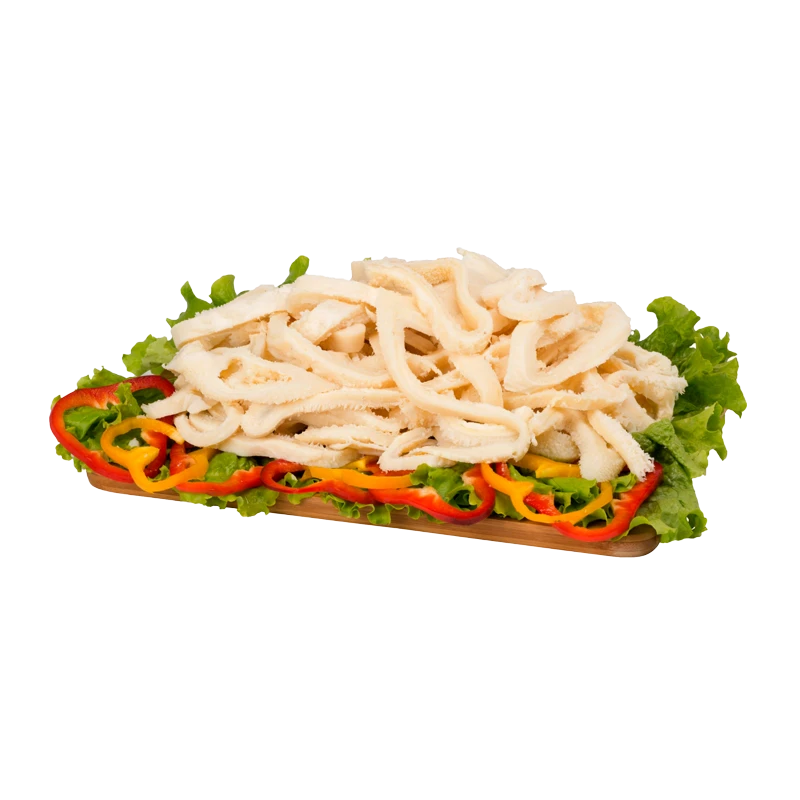Tripe — Nutrients, Health Benefits, And Shopping Tips

Written by Listonic Team
Last update on September 4, 2024
Tripe nutrients
Nutrition facts
Amount per 100 g
Calories
🔥 103 kcal
| Nutrition per: 100 g | Value | % Daily Value* |
|---|---|---|
| Carbs | 0 g | - |
| Fiber | 0 g | - |
| Sugars | 0 g | - |
| Glycemic Index | 0 | - |
| Protein | 18 g | 36% |
| Sodium | 72 mg | 3.13% |
| Total Fat | 4 g | 5.13% |
*The % of Daily Value (DV) tells you how much a nutrient in a serving of food contributes to a daily diet. 2,000 calories a day is used for general nutrition advice.
18 g
🧀 Good Protein Content
Tripe facts & tips
Health benefits
- High in protein, essential for muscle growth, repair, and overall body function.
- Rich in essential vitamins and minerals such as Vitamin B12, zinc, and iron, which support energy production, immune function, and overall health.
- Low in fat, making it a healthy protein option for weight management and heart health.
- Contains collagen, which may support joint health and skin elasticity.
Health risks
- High cholesterol content which may be a concern for individuals managing their cholesterol levels when consumed frequently.
- Potential for contamination with harmful bacteria or parasites, particularly if the tripe is not properly cleaned, cooked, or sourced from a reputable supplier.
- Low nutrient density compared to other organ meats, as tripe is lower in vitamins and minerals than liver or heart.
- Risk of digestive discomfort such as bloating or gas when consumed in large quantities, particularly if not cooked thoroughly.
How to choose tripe
Tripe should be clean and have a pale white color, with a firm texture that indicates it has been properly processed. The smell should be mild and not overpowering, as fresh tripe has only a slight aroma.
Do not buy tripe that is discolored or has a strong, unpleasant odor, as these are signs it is not fresh. Tripe that is slimy or feels excessively tough should also be avoided, as it may be difficult to prepare and lack flavor.

How to store tripe
Tripe should be stored in the refrigerator, tightly wrapped in plastic wrap or placed in an airtight container. Refrigeration helps maintain its freshness and quality for up to two days. For longer storage, consider freezing.
Air exposure can cause tripe to spoil quickly. Avoid leaving it uncovered or near strong-smelling foods, which can affect its odor and taste. Always thaw frozen tripe in the refrigerator and use it promptly to ensure safety and optimal flavor.
✅ Extra Tip
How long does it last?
Tripe can last for 1-2 days in the refrigerator. For longer storage, tripe can be frozen for up to 3-4 months.
What to do with leftovers?
Leftover tripe can be used in a variety of traditional and hearty dishes. Add it to soups, stews, or casseroles for a rich and tender texture, or use it as a filling for tacos or burritos with fresh salsa and guacamole. Tripe is also great when simmered in a spicy tomato sauce and served over rice or pasta.
Use tripe in a stir-fry with vegetables and your choice of sauce, or mix it into a braised dish with beans, tomatoes, and herbs for added depth of flavor. If you have a lot of tripe, consider making a batch of tripe stew with potatoes and carrots, or using it in a chili with beans and spices. Tripe can also be grilled and served with a tangy dipping sauce, or added to a savory pie with a flaky crust. For a quick meal, reheat tripe and serve with crusty bread or over a bed of greens.
👨⚕️️ Medical disclaimer
Discover products from other categories
Listonic Team
Fact-checked
Our editorial team checked this article to make sure it was accurate at the time of publishing it.
Get the top-rated shopping list app

tripe
1 piece







